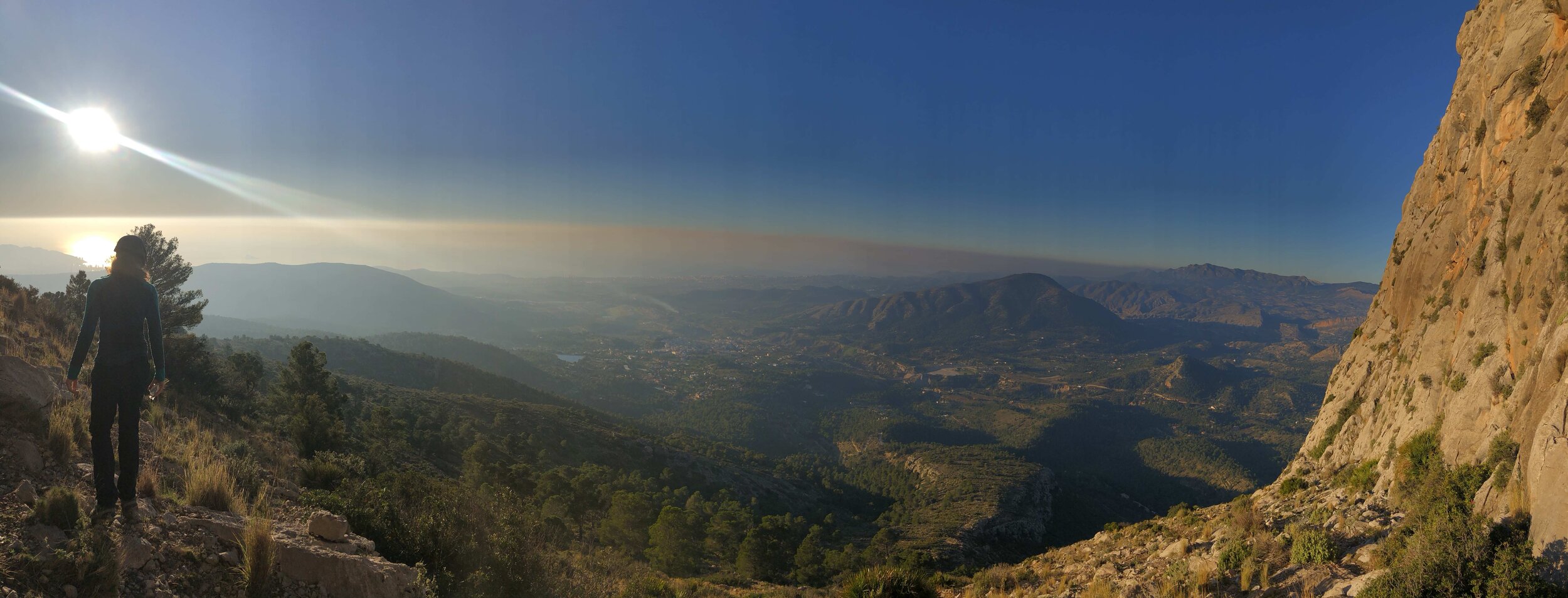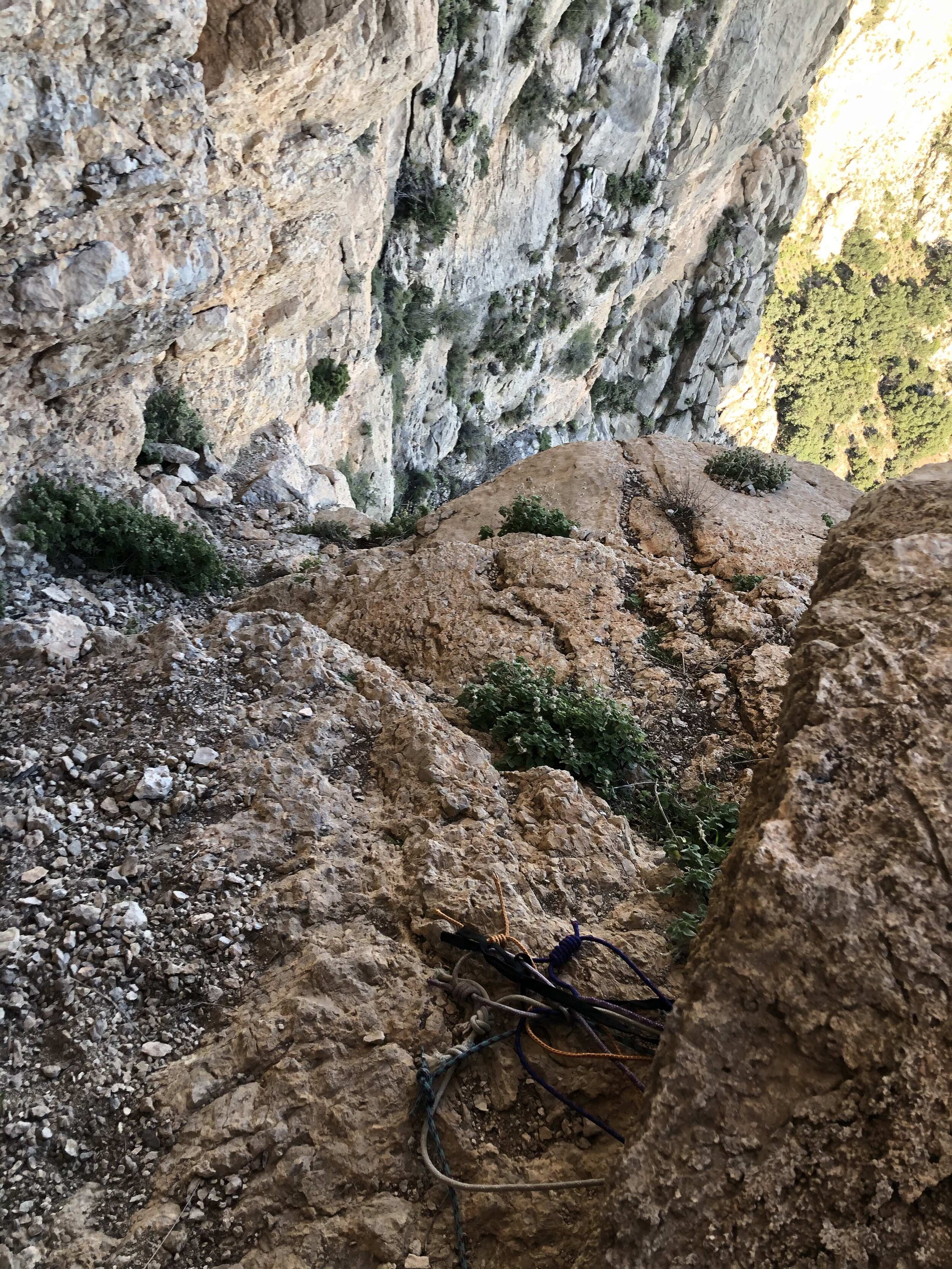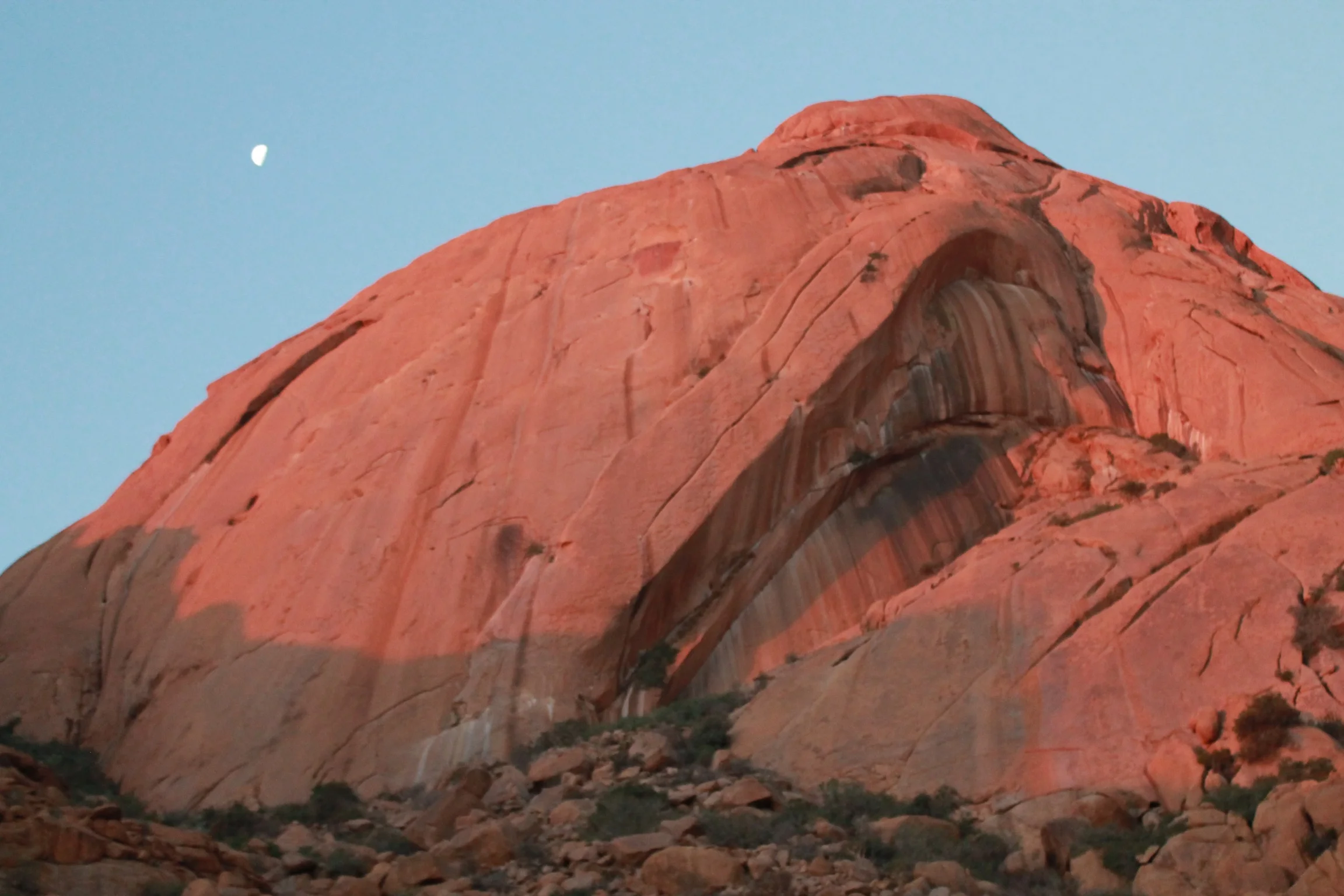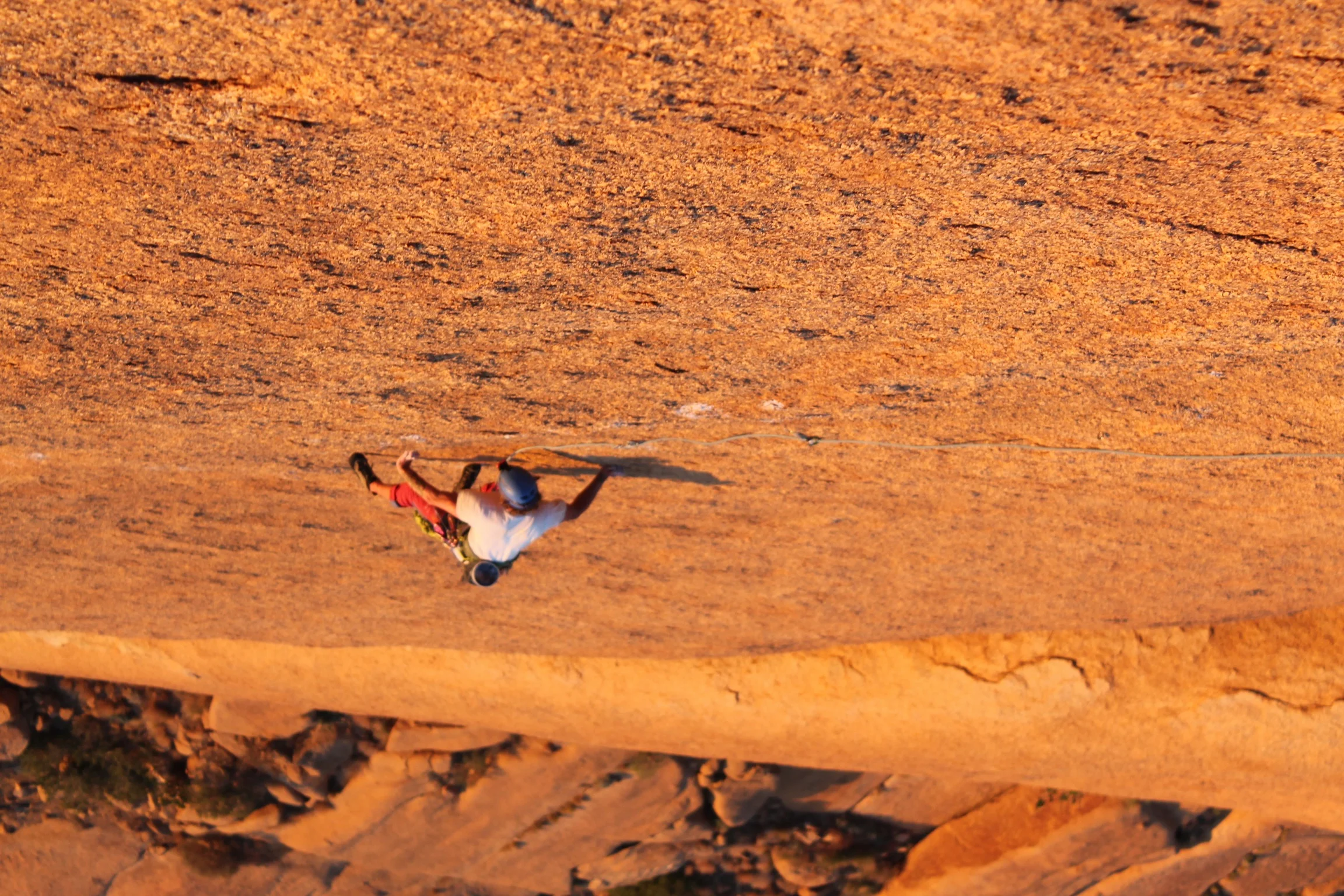Fig 1. Topo with detail inset.
Over approximately 3 weeks in May 2022, my sister, Nina, and I bolted and climbed a new route on the South West Wall of Namibia’s Spitzkoppe. The route climbs a distinct white water run which runs straight down the longest section of wall. It shares some pitches with my other route on the SW Wall (Slabchip) but most if new terrain. It climbs about 350 vertical meters, but I estimate about 400m of climbing because of the angle. It’s much more sustained than Slabchip. Whereas Slabchip climbs multiple long moderate cracks, !Guri |Aib is nothing but slab. We graded it 5.12a/b, or 25/6 in SA grades. Any feedback on the grades is welcome.
The expedition was generously supported by the Neil Mackenzie Adventure Grant which is run with the help of the University of British Columbia’s Varsity Outdoor Club. Without them, the route would not have been possible. Thank you. I should also thank the AC Irvine Travel Fund which helps support University of Oxford student expeditions, as many of the bolts we used I had originally purchased with their support. Thank you. And I should thank John C. Wilkinson, specifically, for his generosity. Thank you.
!Guri |Aib means “White Streak” in Khoekhoegowab, the language of the Damara people who live around Spitzkoppe. I thank Benny Gids for the translation and guidance on pronunciation, which you can hear below.
We bolted on rappel which took about a week, then projected for a little while, hauled a ledge up to half way, and climbed the route in 13 pitches (several links are possible) over 4 days. My first portaledge experience, and I loved it! Sooooo much fun.
I’ll try to post a trip report as soon as, but in the mean time, find the topo and route description below. You can download a pdf of the topo here. Contact me if you are considering the route and have any questions.
!Guri |Aib (The White Streak)
16 pitches (sport)
SA 25/6; French 7a+/b; Y.D.S. 5.12a/b
Pitch 1
SA 24; French 7a; Y.D.S. 5.11d
8 bolts; 25m
As for P1 of the Original Route. Climb the obvious bolt line up the white streak at the base of the wall.
Pitch 2
SA 22; French 6c; Y.D.S. 5.11b
8 bolts; 15m
Step off the belay to the left, climb through a crux to gain easing terrain and a belay.
Pitch 3
SA 25; French 7a+; Y.D.S. 5.12a
15 bolts; 35m
Step left, then traverse right on underclings to gain the chimney. Traverse back left to a rail, then direct to a grey blob on the right. Climb left from this to a good flake (pull gently), then rightward through a crux to gain easing terrain. Stop at a bad belay or combine P3 and 4 (recommended).
Pitch 4
SA 17; French 5b; Y.D.S. 5.9
4 bolts; 15m
Step right then climb to a good belay on the left.
Pitch 5
SA 20; French 6a+; Y.D.S. 5.10c
14 bolts; 35m
Climb rightwards to gain an overlap and join with Slabchip P3. Continue up edges and scoops to a belay in a hole on the left.
Pitch 6
SA 22, French 6c, Y.D.S. 5.11b, 30m
8 bolts; 30m
Climb as for Slabchip P5. Traverse right to the white streak and climb direct to a bad belay on the left. Stop here or link P6 and 7.
Pitch 7
SA 25, French 7a+, Y.D.S. 5.12a
8 bolts; 20m
As for Slabchip P6. Climb the white streak using palms and stems to an undercling above a scab; pass it to gain easier climbing above.
Pitch 8
SA 22, French 6c, Y.D.S. 5.11b
8 bolts; 25m
Follow the white streak to gain a belay on a rotten knob to the right. Stop here or link P8 and 9 at SA 23.
Pitch 9
SA 22, French 6c, Y.D.S. 5.11b
10 bolts; 30m
Gain the flakes above the belay and climb these before traversing left and then direct to a belay on the right.
Pitch 10
SA 22, French 6c, Y.D.S. 5.11b
13 bolts; 30m
Climb to the right past a small crystal pocket and direct to some ledges, then climb right-facing flakes until a traverse to the left is necessary. Continue direct to a belay on a grey blob. Stop here or link P10 and 11.
Pitch 11
SA 21, French 6b+, Y.D.S. 5.11a
9 bolts; 25m
Climb direct to gain the Active Side of Infinity bolts, then follow these right to a belay in a sandy hollow.
Pitch 12
SA 22, French 6c, Y.D.S. 5.11b
8 bolts; 15m
Traverse left on a polished footrail before stepping into the white streak. Gain a rest before making crux moves up and right past a bulge to gain a belay on the right.
Pitch 13
SA 20, French 6a+, Y.D.S. 5.10c
15 bolts; 50m
Step left and climb up the white streak until you can traverse left to a belay in a scoop.
Pitch 14
SA 16, French 4c, Y.D.S. 5.8
10 bolts; 45m
Continue up the white streak to a belay in a hollow on the right.
Pitch 15
SA 10, French 3, Y.D.S. 5.4
2 bolts; 30m
Cross the huge ledges to a belay under the bulge.
Pitch 16
SA 25/6, French 7a+/b, Y.D.S. 5.12a/b
12 bolts; 30m
Climb up the slabs to an initial low bolt under the bulge, traverse left and find your way through the bulge. Height helps. Traverse back to the white streak and palm your way to a jug hole. Mantle and continue up easing terrain.
Descent
Scramble down, or rappel the route on two 60m ropes following the green line (rappel length is maximised, and anchors from which ropes are likely to be snagged are avoided). This rappel line replaces the Slabchip rappels as the recommended route, if rappelling the S.W. Face (it is more direct and less snaggy).
Rack
Take 16 draws, or more if you want to link pitches together. Several extendable draws will help avoid rope drag. Two 60m ropes make retreat possible.
























